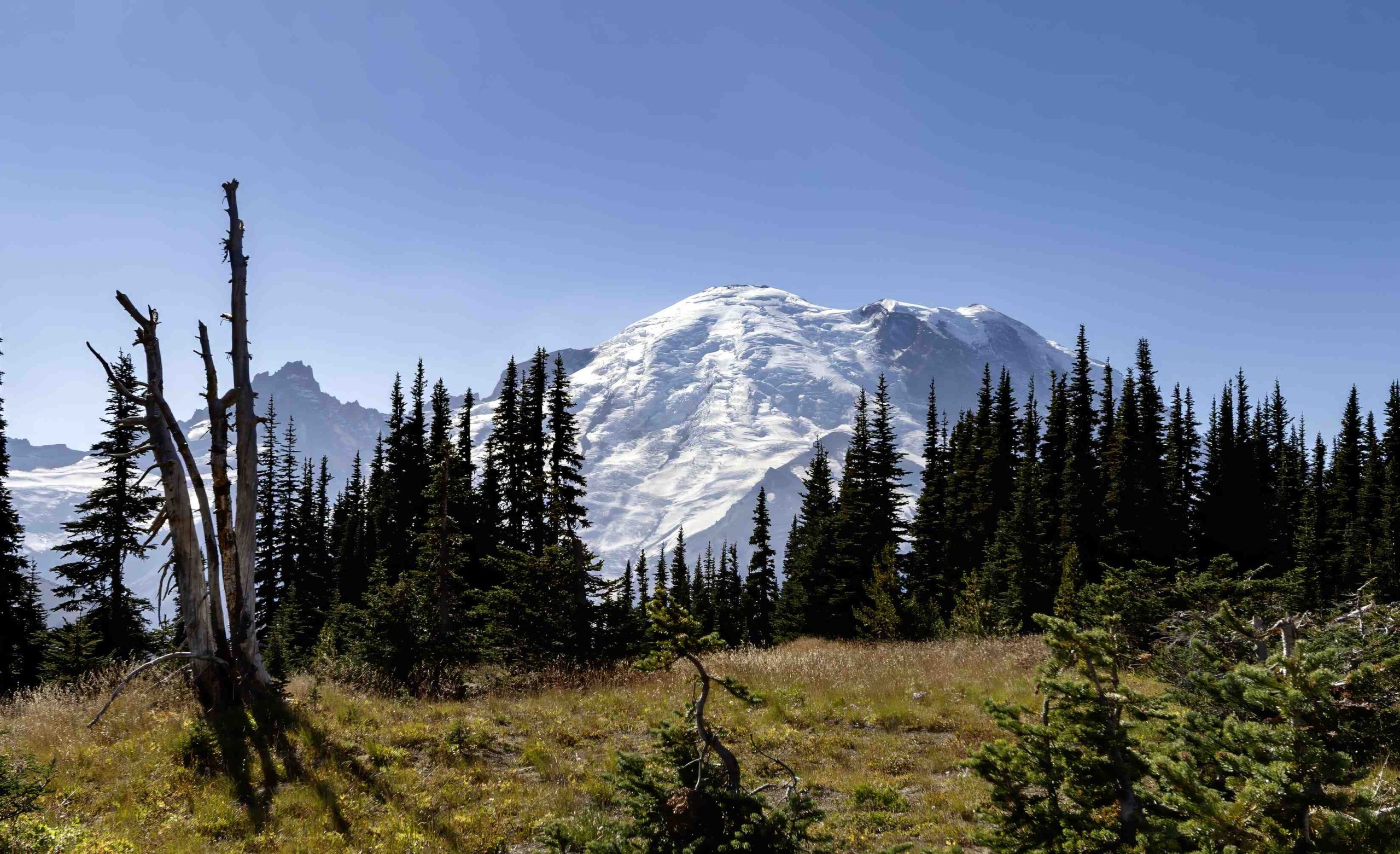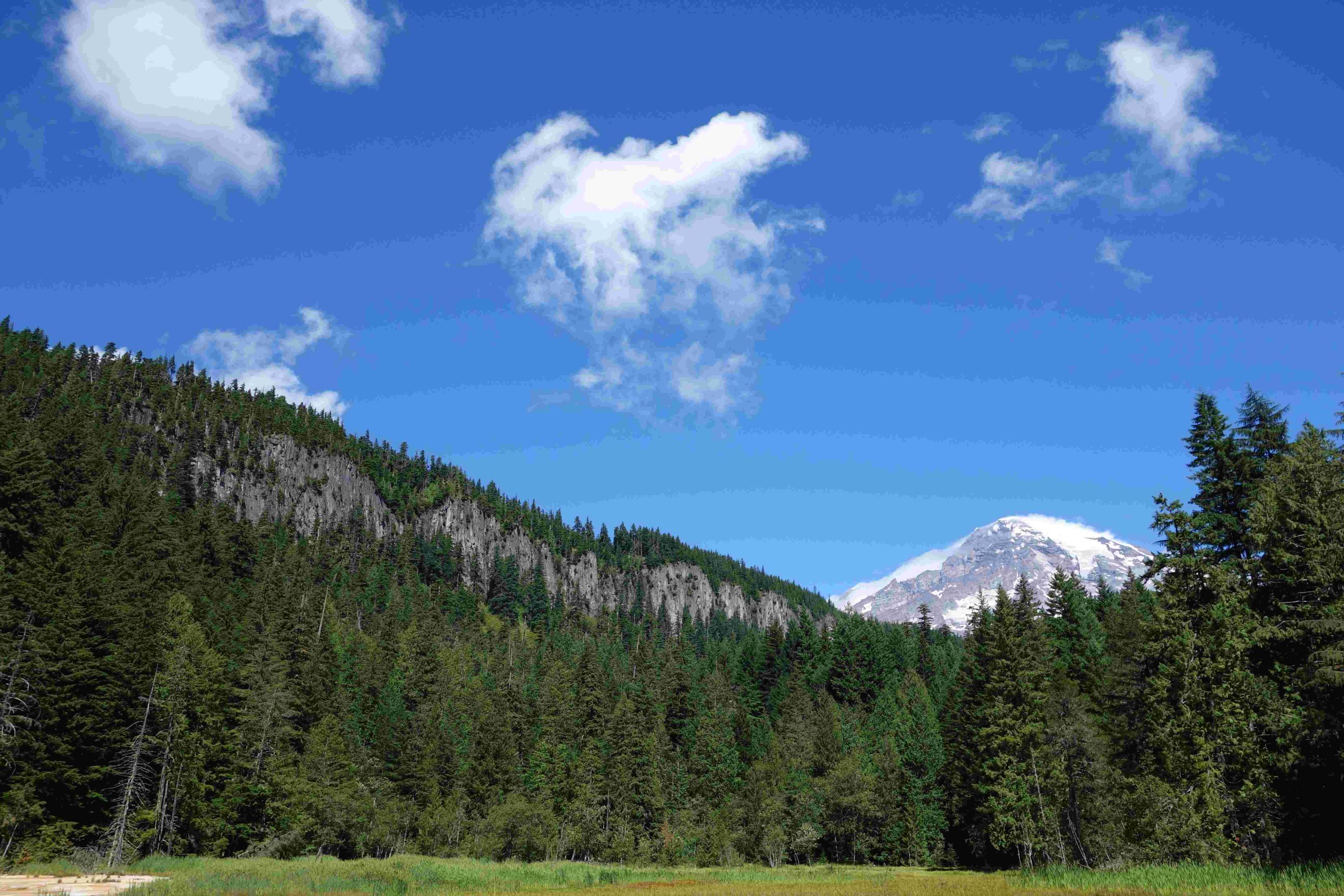The Carbon River Entrance to Mount Rainier National Park offers a unique year-round access point for hikers and nature enthusiasts. Located in the northwest corner of the park, this entrance provides a gateway to old-growth forests, scenic waterfalls, and the Carbon Glacier. Despite vehicle restrictions due to past flood damage, the area remains a popular destination for those seeking to explore Mount Rainier’s diverse ecosystems and rugged beauty on foot or by bicycle.
What Makes the Carbon River Entrance Unique?

The Carbon River Entrance stands out as a distinctive access point to Mount Rainier National Park. Unlike other entrances, it offers year-round accessibility for foot traffic, providing visitors with a chance to experience the park’s beauty in all seasons. The area is characterized by:
- Year-round access for hikers and cyclists
- Conversion of the former road into a trail
- Proximity to old-growth forests and scenic waterfalls
- Access to the Carbon Glacier, one of the lowest-elevation glaciers in the contiguous United States
This entrance serves as a gateway to some of the park’s most unique and less-crowded areas, making it a favorite among those seeking a more secluded Mount Rainier experience.
How Can Visitors Access the Carbon River Area?

Accessing the Carbon River area requires some planning due to its unique conditions:
- Vehicle Access: Limited to the park entrance via State Route 165 through Wilkeson
- Road Closure: The Carbon River Road is closed to vehicles past the park boundary due to flood damage
- Alternative Transportation: Open to bicycle and pedestrian traffic beyond the closure point
- Seasonal Considerations: Potential road closures and adverse weather, especially in winter
Visitors should check current conditions before planning their trip, as weather and road status can significantly impact access.
What Trails Are Available from the Carbon River Entrance?
The Carbon River Entrance serves as a starting point for several notable trails:
- Carbon River Trail to Ipsut Falls
- Length: 10.8 miles round trip
- Difficulty: Moderate
- Elevation Gain: Approximately 500 feet
-
Highlights: Old-growth forest, Green Lake side trip, Chenuis Falls
-
Green Lake Trail
- Length: 3.4 miles round trip (side trip from main trail)
- Difficulty: Moderate
-
Highlights: Scenic lake surrounded by forest
-
Chenuis Falls Trail
- Length: 0.2 miles (spur trail from main trail)
- Difficulty: Easy
-
Highlights: Picturesque waterfall
-
Wonderland Trail Access
- Connects to Ipsut Pass and Tolmie Peak
- Difficulty: Challenging
- Highlights: Expansive views, backcountry experience
These trails offer a range of experiences, from easy walks to challenging backcountry adventures, catering to various skill levels and interests.
What Camping Options Are Available Near the Carbon River Entrance?
For those looking to extend their visit, camping options are available:
Ipsut Creek Campground
- Location: 5 miles from the Carbon River Entrance
- Access: Foot or mountain bike only
- Permits: Wilderness camping permit required
- Amenities:
- Bear boxes
- Rustic campfire circle
- Popularity: Often filled on weekends
| Campground Feature | Details |
|---|---|
| Distance from Entrance | 5 miles |
| Access Method | Foot or mountain bike |
| Permit Type | Wilderness camping permit |
| Key Amenities | Bear boxes, campfire circle |
| Best Time to Reserve | Weekdays (less crowded) |
Campers should be prepared for a rustic experience and follow Leave No Trace principles to preserve the natural environment.
How Is Parking Managed at the Carbon River Entrance?
Parking at the Carbon River Entrance requires some planning due to limited space:
- Available Spaces: Approximately a dozen spots after the bridge
- Overflow Options: Roadside parking before the bridge
- Fees: Standard Mount Rainier National Park entrance fee applies
- Peak Times: Weekends and summer months see highest usage
- Accessibility: Limited; visitors advised to park responsibly
Visitors are encouraged to arrive early during peak seasons to secure parking and should be prepared to use overflow areas if necessary.
What Are the Best Times to Visit the Carbon River Area?
The best time to visit the Carbon River area depends on your preferences and goals:
- Summer (June – August)
- Pros: Warmest weather, longest daylight hours
-
Cons: Busiest season, limited parking availability
-
Fall (September – November)
- Pros: Fall colors, fewer crowds
-
Cons: Cooler temperatures, increased chance of rain
-
Winter (December – February)
- Pros: Snow-covered landscapes, solitude
-
Cons: Cold temperatures, potential road closures
-
Spring (March – May)
- Pros: Wildflowers begin blooming, waterfalls at peak flow
- Cons: Unpredictable weather, lingering snow at higher elevations
Each season offers a unique perspective on the Carbon River area, allowing visitors to experience Mount Rainier’s diverse ecosystems throughout the year.
What Should Visitors Bring for a Trip to the Carbon River Entrance?
Preparing for a visit to the Carbon River area requires careful planning. Essential items include:
- Sturdy hiking boots
- Layered clothing (including waterproof outer layer)
- Plenty of water and snacks
- Navigation tools (map and compass)
- First aid kit
- Flashlight or headlamp
- Sun protection (sunscreen, hat, sunglasses)
- Insect repellent
- Camera for capturing memories
Additionally, visitors should:
– Check current trail conditions before departing
– Inform someone of their hiking plans
– Carry the Ten Essentials for outdoor safety
How Does the Carbon River Entrance Compare to Other Mount Rainier Access Points?
The Carbon River Entrance offers a distinct experience compared to other Mount Rainier access points:
| Feature | Carbon River Entrance | Other Entrances |
|---|---|---|
| Vehicle Access | Limited | More extensive |
| Crowds | Generally less crowded | Can be very busy in peak season |
| Trail Types | Mostly converted road and wilderness trails | Mix of paved and wilderness trails |
| Glacier Access | Close proximity to Carbon Glacier | Varies by location |
| Seasonal Accessibility | Year-round for foot traffic | Some close in winter |
This entrance appeals to those seeking a more rugged and less developed park experience, offering unique opportunities for wilderness exploration and solitude.
What Wildlife Might Visitors Encounter in the Carbon River Area?
The Carbon River area is home to diverse wildlife, including:
- Black bears
- Elk
- Mountain goats
- Marmots
- Various bird species
Visitors should practice wildlife safety:
1. Maintain a safe distance from all animals
2. Store food properly to avoid attracting wildlife
3. Make noise while hiking to avoid surprising animals
4. Carry bear spray in case of encounters
Observing wildlife from a distance can be a highlight of any visit to the Carbon River area, adding to the rich natural experience of Mount Rainier National Park.
References:
1. https://visitrainier.com/carbon-river-northwest-entrance/
2. https://www.wta.org/go-hiking/hikes/carbon-river
3. https://www.nps.gov/mora/planyourvisit/carbon-river-and-mowich.htm
